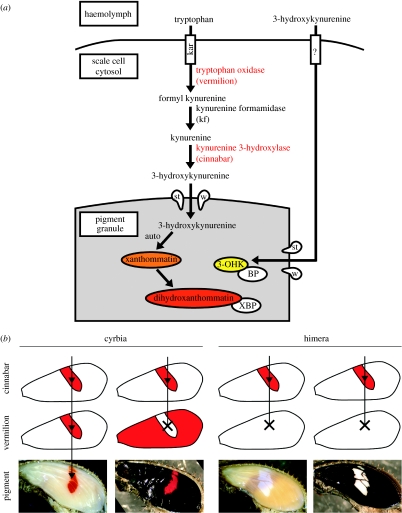Figure 4.
(a) A hypothetical model of ommochrome synthesis in butterfly wing scales based on the work from the Drosophila eye. Tryptophan, the ommochrome precursor, is thought to be taken up into cells by the karmoisin transporter. Tryptophan is then processed by several enzymes, including those encoded by vermilion and cinnabar into 3-OHK, which is then transported into granules by the scarlet/white heterodimer. 3-OHK is processed into xanthommatin in a granule, where a binding protein (XBP) is thought to modulate the redox state of xanthommatin, thereby determining whether the pigment will appear more orange or red in hue. 3-OHK can be taken up directly into scales, and we have previously speculated that a binding protein (BP) may be required to stabilize this molecule in a pigment granule. See Reed & Nagy (2005) for a detailed discussion. (b) A working model of pigment regulation through the overlap of vermilion and cinnabar prepatterns. Red pigment is synthesized at the time and place transcription of vermilion and cinnabar (shown in red) overlap.

